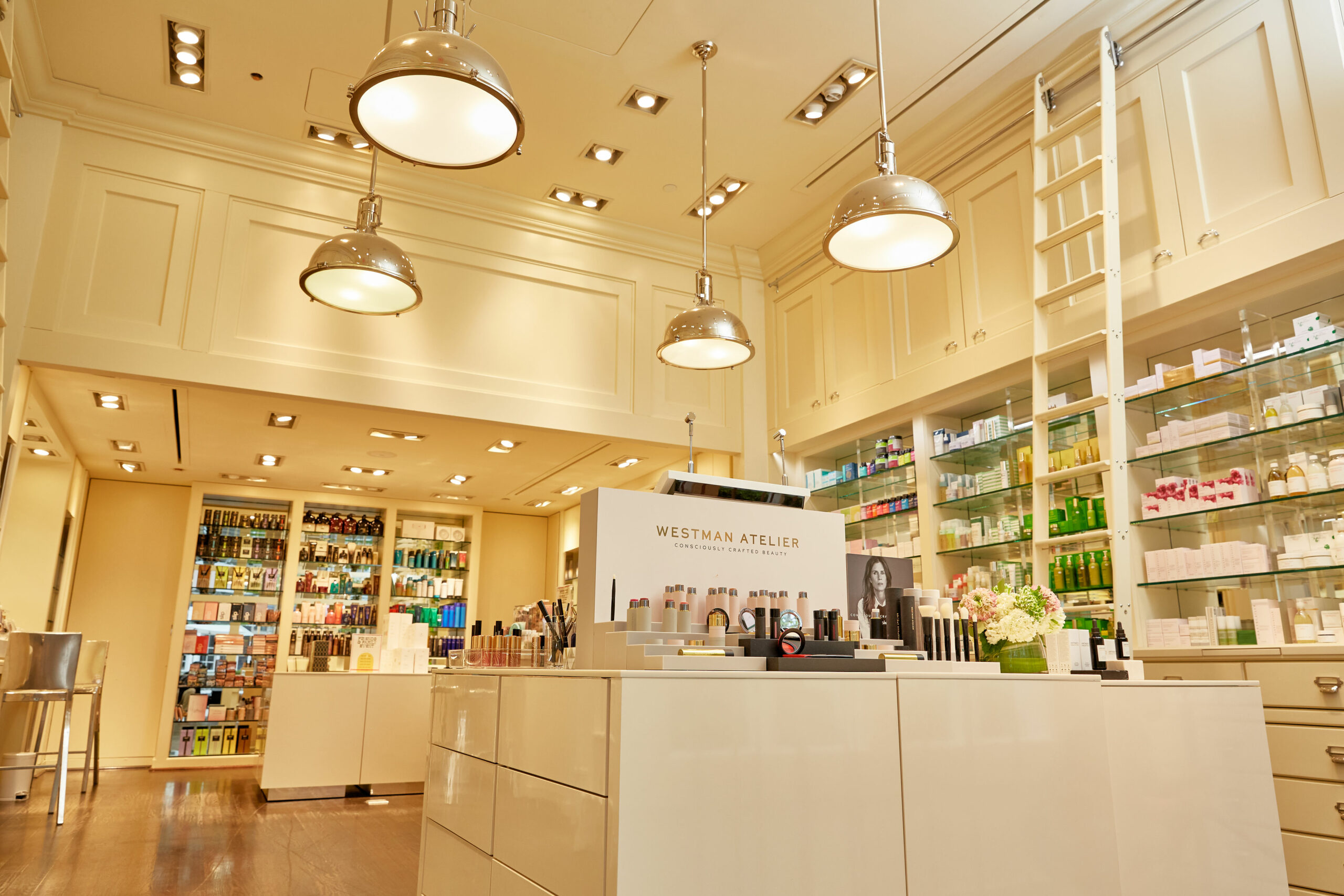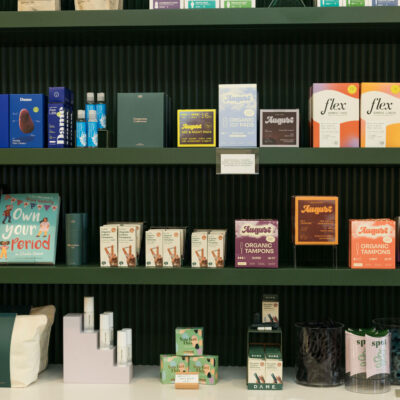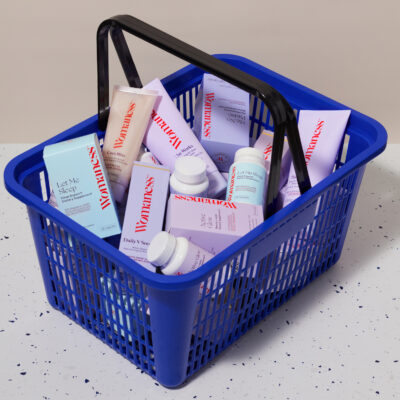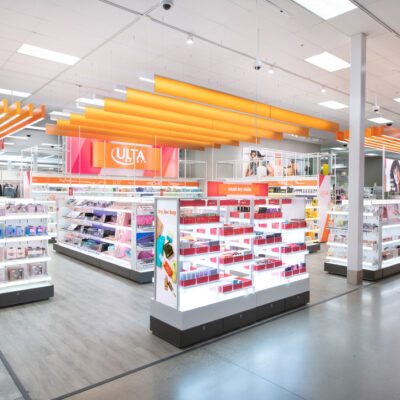
Cos Bar’s Back-To-Basics Strategies For Navigating Slowing Luxury Beauty Spending
Luxury beauty retailer Cos Bar is caught in the crosshairs of slowing luxury spending and beauty industry growth.
Credit card transaction data from Citi provided to The Wall Street Journal shows Americans’ luxury goods spending fell 9.3% in February and 5.9% in January. The luxury spending slippage could be a big blow to prestige beauty, where high-income consumers (those earning over $100,000 annually) have represented roughly half of the customer base, according to an estimate from market research firm Circana last year, when their spending increases were offsetting spending retreats from lower-income customers.
“Luxury shoppers are pulling back a little bit, but if it’s a no now, it might be a yes later, and they’re not giving up on it,” says Oliver Garfield, CEO of Cos Bar, where the average customer comes from a household making $250,000 annually. “From a leadership perspective, though, I’d say we are taking a bit more of a conservative approach to budgeting and capital projects. We have concern, and we want to be ready to manage downside, if there is downside.”
As it monitors luxury spending slippage, Cos Bar isn’t powering down expansion initiatives. After more than a year without a store opening—its last store opened in Brooklyn in 2023 when it took Shen Beauty’s former space—the retailer is opening its 21st location in June in Studio City, Calif. Currently, its 20 stores are spread across New York, Colorado, California, New Jersey, Minnesota, Texas, New Mexico and Arizona.
To energize its assortment, Cos Bar is planning to accelerate brand launches. At the moment, it stocks around 75 brands, including La Mer, Augustinus Bader, Sisley Paris, Clé de Peau, La Prairie, 111Skin, Tom Ford, Westman Atelier and Natura Bissé.
Beauty Independent spoke with Garfield about Cos Bar’s 2024 performance, assortment strategies, the effect of the merger between Saks Fifth avenue and Neiman Marcus on its business, and Amazon’s presence in beauty.
How did Cos Bar perform last year compared to previous years?
2024 was an anomalous year for us because we went through a massive ERP [enterprise resource planning] transformation that coincided with the start of our fiscal year, which was Feb. 1 last year. I remember coming off an absolutely incredible December and January. Then, it felt like it did a 180 into February, which coincided with our go-live date. I don’t think any retailer or brand has ever gone through an ERP changeover without some pain. We came out whole on the other side, though.
It’s no secret that there were macro headwinds last year. We look at Kering, LVMH, Richemont. We look at prestige beauty. I wish Circana had luxury beauty. We’re not in that prestige number with 100% overlap. So, it’s always trying to triangulate between our performance, beauty performance and luxury performance to get a sense of what’s happening in the marketplace.
2021, 2022 and 2023 were incredibly strong growth years for us. 2024 was down comparatively. We weren’t down as a retailer, just the trend given those three years slowed down for us. I’m sure it’s a combination of self-inflicted challenges as well as macro and things peculiar to our geographies like people flying to Aspen and Vail and traveling. If there is a surge in European, Caribbean or Asian travel, that impacts our business because we have very affluent clientele that is incredibly liquid and can pick up and go where they want.
What about category performance?
It wasn’t that dissimilar from what you saw in the broader industry. Makeup was down a couple points for us. However, luxury skincare was up a couple points. Fragrance was really the growth category. Skincare for us was 40% [of the total business], makeup 30% and fragrance 15% last year, but that fragrance percentage is meaningfully up over where it was pre-COVID.
I wouldn’t say it’s entirely taking away from another category because the pie is getting bigger. But it’s like, how high is high after you see this fragrance growth in ‘21 and ‘22, and you’re in these 30% to 50% year-over-year comps in some brands or as a category. That growth maintains into ‘23 and then into ’24 for some brands. You think, this can’t be sustainable, but it seems to be continuing, which is incredible.

How is business performance this year so far?
We’re halfway through our fiscal Q1, and overall business is up meaningfully over the total ‘24 trend. We’re thrilled with that. We are seeing an increase in ticket growth. AUS (average unit sale) or AOV (average order value), whichever you want to use, is flat.
I’ll always take ticket growth over AOV because, to me, it’s a better fundamental, but I still think there’s some resistance to building a basket over a certain level. The customer is not just going to take everything we show. They’re definitely more cognizant of what they spend, but they’re coming in at the same level of frequency or more.
February was a particularly slow trading period for retail and consumer confidence took a hit. Is the average Cos Bar customer immune to the market dynamics?
The trend of ticket versus AOV would be somewhat of a data-driven approach in trying to answer that question. The data would suggest that the customer is pulling back a little bit and this is the wealthy customer who has multiple homes. They’re still value seekers, though.
Now, there’s definitely a delta between the consumer confidence data that comes out and what people actually do. Again, you have to peel back the onion. If we look back at ‘24 knowing that luxury brands had some headwinds, is that the aspirational customer dropping out or the luxury customer? It’s probably not binary in that sense.
How do you react to that? Do you strategize differently or adjust forecasts?
I’ll go back to our ERP project. While ‘24 was a year of disruption, ‘25 is a year of absorption and what internally we’re calling “back to basics.” Honestly, I think the “back-to-basics” strategy always works. Have the right inventory at the right place at the right time. Have really great people in store that are trained. Have stores that look good where we’re clienteling and delivering good service. That’s the most important thing.
The differentiator for us is the quality of our store teams and the relationships they have with customers. That’s an always-on strategy, and I think it’s hard to do well all the time.
How are you thinking about your assortment this year?
We might actually ramp up a little bit on some more launches than what we’ve been doing for the past couple years, not just in fragrance, but in other categories, too. We’re seeing a bit of a need for more newness within our assortment.
The speed at which brands come and go is increasing. Back 20 years ago, when a brand got to the top of the food chain, that was sticky and that would last forever. If it started to decline, you could see that trend coming from a hundred miles away. So, as that life cycle is speeding up and indie beauty picks up more share, I think there is more willingness to try new things. However, people still want brand recognition at the same time.
Some retailers pulled back on new brand launches over the past year. How are you looking to change your strategy around them this year?
We’ve never been a retailer that has launched to launch or had a KPI of we need to have this many launches in a year or every quarter. We’re very opportunistic, where we need to see something that we are jumping up and down about. We have to believe that it’s better than something in our current assortment. That’s our north star.
That said, I think we could do that more aggressively. We could call out some things that have lost momentum in the marketplace and be on the lookout for brands that are picking up luxury mindshare quicker. We’ve seen some interesting things in bath and body, skincare and fragrance. Makeup is where there is a bit of lack of innovation and energy right now.

Is Cos Bar’s customer profile evolving? Are gen Z shoppers discovering you?
We’re boomers, gen X and more and more millennials. That’s our customer, and they’re in the top 2% relative to their tastes, preferences and willingness to buy.
We’re not seeing gen Z for the most part. They’re not a material part of our business, nor something that we are focused on. However, that being said, the trend with fragrance and young boys is real. Not in every market, but we certainly have a number of stores where teenage boys are coming in and spending a ton of time in the store multiple times a week. Sometimes they buy, sometimes they don’t.
At some of our stores, we’ve had to put signs on the window that minors are only allowed in the store with an adult or guardian. Four or five teens will come in and take the sales associate’s time to sample 20 different fragrances just because they’re trying to get smart and get samples. Now, is that driving our fragrance growth? No, but it’s incremental, and there are enough of them that will spend $400 on a fragrance. They love it, and they’re passionate about it.
We also see the daughters traveling with their parents and coming into store. I think gen Z’s relationship with beauty is very different than other generations. It’s incredible, their passion for it, but they don’t have unlimited money. Let’s say there’s five things they want to buy, they’ll come in once a week and buy one of them and then come back. They spend a bunch of time on TikTok researching. A purchase is an investment that they put in relative to a boomer.
What does the merger between Saks Fifth Avenue and Neiman Marcus signal for the luxury market?
A strong Neiman Marcus and a strong Saks is very important for luxury. Luxury brands need meaningful distribution, and those retailers were the places to go for that wholesale volume. When they’re strong, we like it because it helps with the brands that we like to partner with as well. It’s all synergistic.
That said, the disruption that they’re having now could create more opportunity for us, both from a growth perspective and from that customer being somewhat orphaned if they’re not getting the experience that they want. So, it’s a double-edged sword.
Are you worried about Amazon’s growing market share in beauty? How will it affect the luxury market?
The bulk of our business is brick-and-mortar. If I was a pure-play digital retailer, I’d be having existential thoughts and concerns given what’s happened with Farfetch and Net-a-Porter. Did Amazon take them out? I don’t think so, but I think we have to watch out for what’s going to happen with the Saks/Neiman Marcus merger and, of course, the $200 million that they financed. What assortment are we going to see on the luxury side from Amazon that we’re not seeing today? It was like a real paradigm shift with Clinique going on there, for sure.
My view is eventually all or most brands will be on Amazon. All the strategics are eventually going to have them be on there. So, it’s an everything store, which is who they want to be. I guess from a Cos Bar perspective, is the risk of showrooming bigger with Amazon than it is today?
Someone comes into Cos Bar, and we turn them on to La Mer, and they love La Mer. How many different online places can they buy La Mer from? More than you can count. Is Amazon that much better in terms of online convenience? I don’t know, but that’s the question: Is what they’re offering just that much better? If someone who bought something in store now wants to buy it online, did they not buy it online before and now that Amazon has it, they will?

I’m a little dubious, but it’s a real question and time will tell. If we were to go down the generational route, boomers and gen X have an empathetic consideration for the sales associate that helps them and knows that they’re on commission and wants to give them that business. Millennials think that way, but maybe less so than boomers and gen X. Is gen Z not going to care at all and completely lack that connection?
What happens if Amazon really nails discovery, though?
Unless something’s going to fundamentally change with AI or the metaverse, I don’t think there’s going to be any structural change to the role of brick-and-mortar and physical interaction with product from a discovery standpoint. Ultimately, the most powerful thing is when a friend gives a recommendation or the role of creators and influencers. Is Amazon ever going to take on the persona of an influencer or merchant?
If it’s an everything store, how are they going to then recommend if they carry everything? To me, that’s the conflict. They want to be discovery, yet they want to have everything. You can’t have both. I don’t think a customer is going to shop both. I think people are genuinely smart, and when they see a sponsored item, they know that this brand is paying for it. It’s not the marketplace voting for the best product.
People are also dubious of reviews and how reviews have been gamed on Amazon and elsewhere. So, to me, people are still going to seek out that recommendation when they don’t want to try everything themselves and trying everything is impossible.





Leave a Reply
You must be logged in to post a comment.